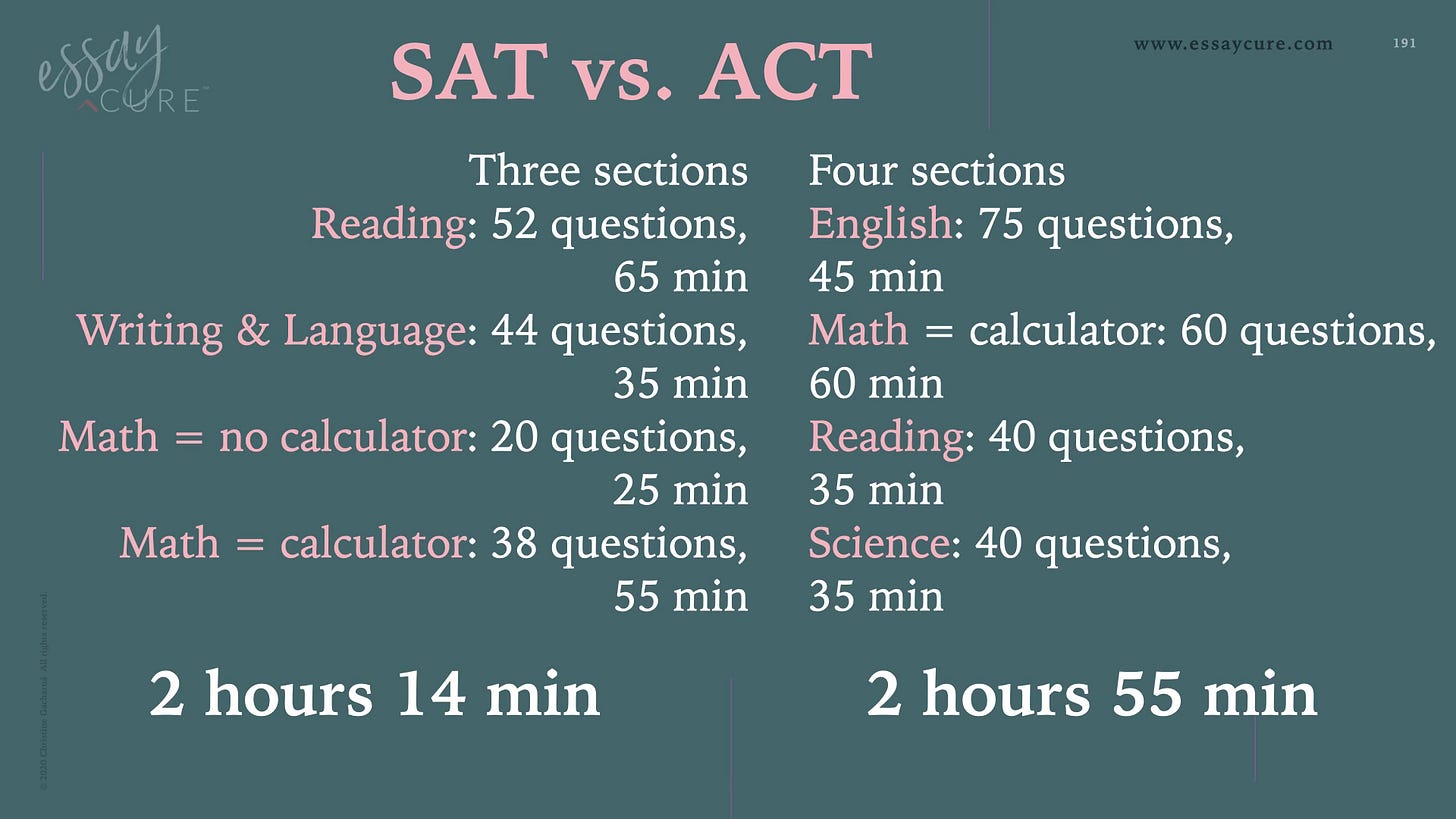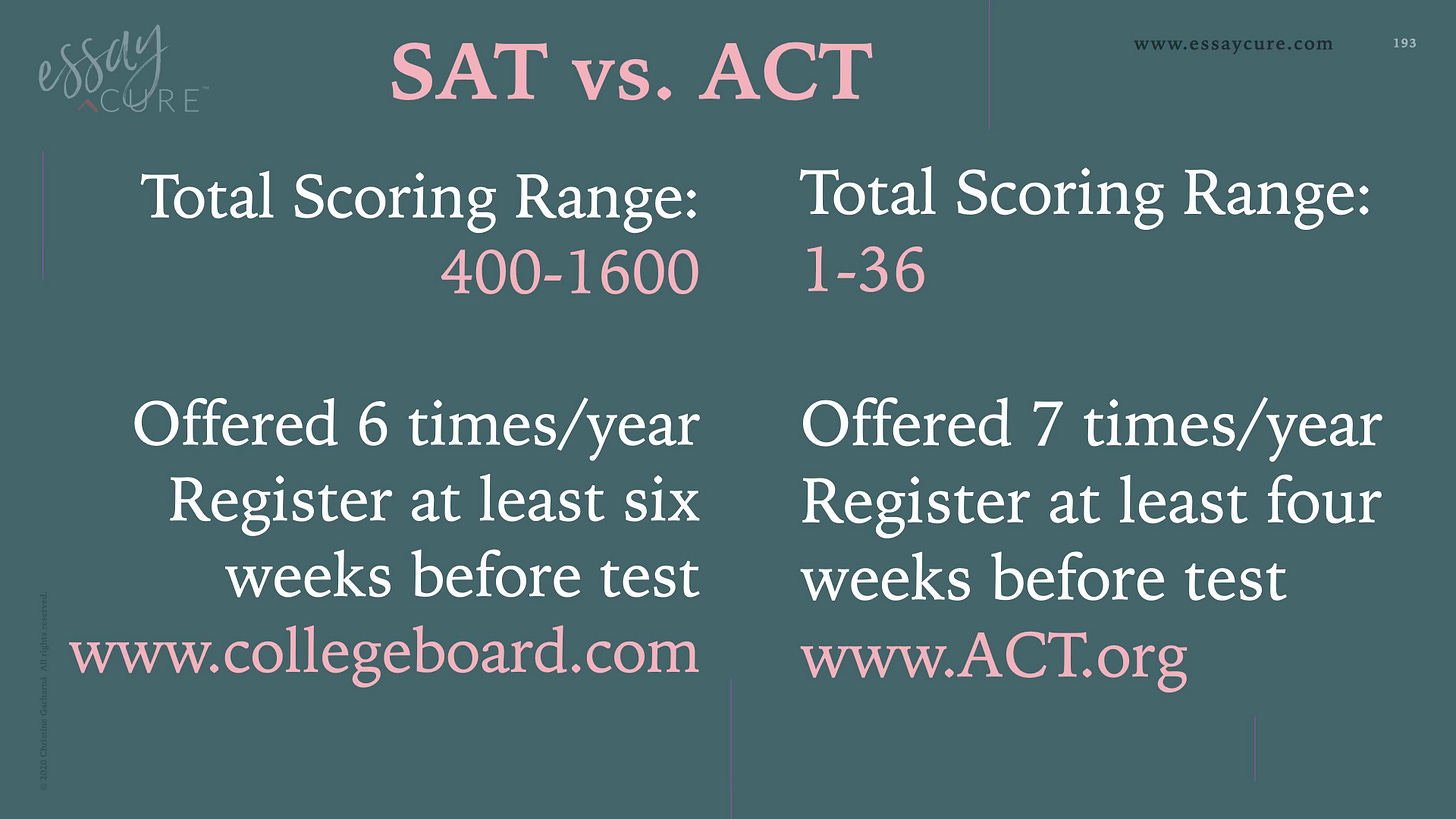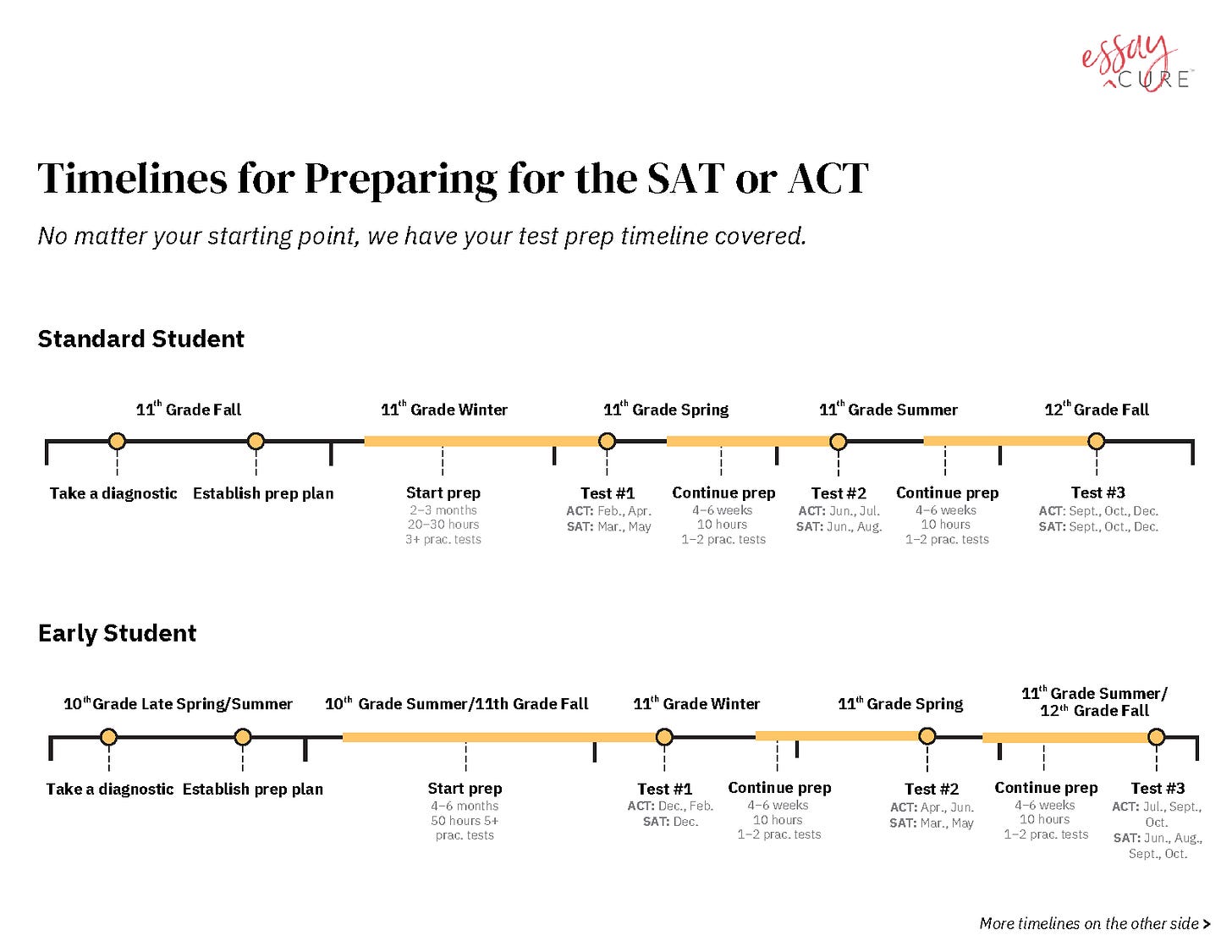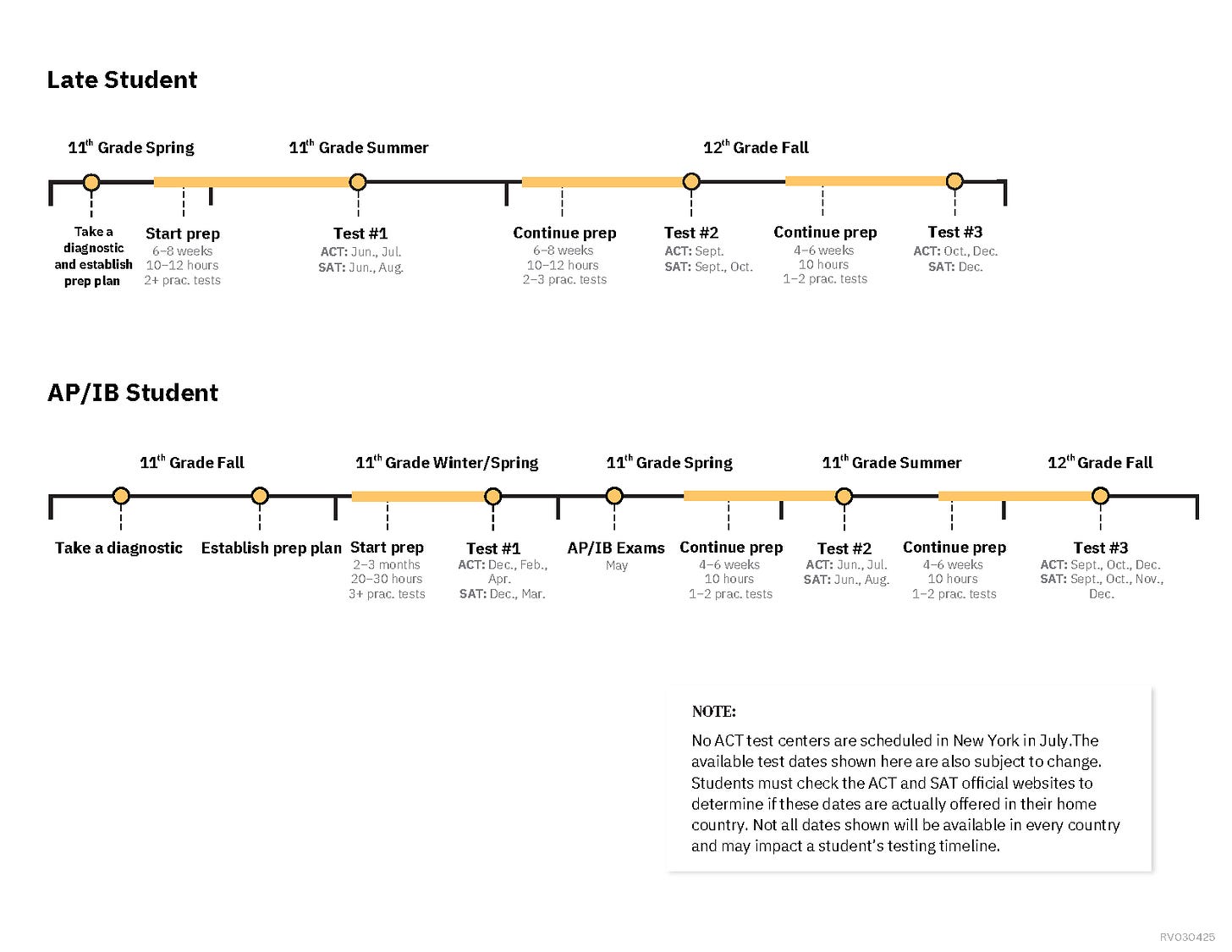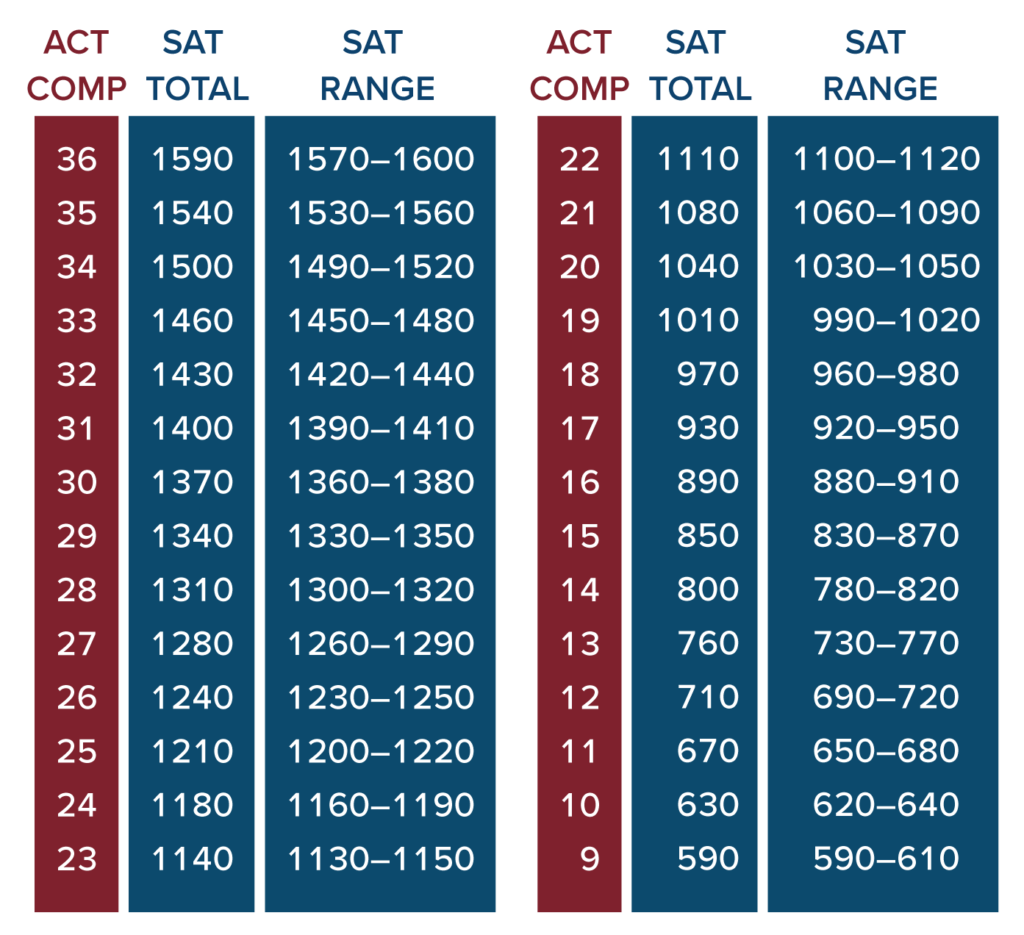Whether or not you take the SAT or the ACT depends on a lot of things.
But first, I want to throw in the Global Seal of Biliteracy. If you are a student who is bilingual, definitely look into the Global Seal of Biliteracy. Students will have to self-advocate for this via their high school counselor. Keep pushing, follow through, do everything you can to get this into your college application.
The SAT and the ACT are both nationally recognized standardized tests. Colleges and universities don’t prefer one over the other. Some U. S. schools require these standardized tests for admission. Some schools are test optional. It depends; students must look at their list of schools they intend to apply to and figure out which schools want what.
Standardized tests measure a student’s proficiency in problem solving and reading comprehension. There are three sections on the SAT, four sections on the ACT; the ACT includes science, which the SAT does not. Neither penalizes for incorrect answers.
There are slight differences in the time that it takes for these exams and differences in scoring. Parents and students will want to look up when these exams are offered, and get registered for them early.
I would recommend that the student take a practice test or take the test for the first time in their junior year, and then schedule the second test after they’ve had some time to study the sections where they didn’t do as well. Students may want to spend time in independent study, an online course, or getting some extra help from a tutor before retaking the exam.
Parents of high schoolers, don’t plan a family vacation the week before one of these exams! Get these exam dates on the family calendar and give your student time to prioritize studying.
Q: Which one should I take, the ACT or the SAT?
A: It depends.
The best way to decide is to take a timed full-length practice test under precise testing conditions for each test.
This is what an ACT/SAT concordance table looks like:
If a student is happy with their score on one, then they can look and see what schools will assume they would get on the other one. Students will want to align their test score numbers with published numbers for the previous year’s admitted freshman at the schools on their list.
At “likely” schools, the student exceeds the requirements for admission, and the student can reasonably expect to be extended an offer. The school should admit more than 60-70 percent of applicants and your scores should be above the range listed for the 25-75 percent of admitted students. Admission rates should be greater than 70 percent.
At “target” schools, the student has a chance of being offered admission by meeting the academic credentials of typical freshman applicants. There are no guarantees, but it is not unreasonable to expect to be accepted to several of your target schools. Admission rates should be greater than 50 percent.
Highly-selective schools with an admission rate of less than 30 percent are “unlikely” for any student, regardless of GPA or standardized test scores. At “unlikely” schools, a student’s academic credentials fall outside those of typical freshman applicants, &/OR the number of applicants far exceeds the number of seats available.
While highly-selective schools are a long shot, students who have talents, beyond interesting extracurricular experiences, or qualities that will allow them to stand out within their admission pool should still apply.
I don't recommend that students take either the ACT or the SAT more than three times. Colleges and universities don't want to see serial test takers.
“Test blind” means the school will not consider the information even if submitted.
“Test optional” means that you do not need to submit SAT or ACT scores to be considered for admission to a particular school. These make an admissions decision based on grades, essays, extracurricular activities, and achievements. But some come with restrictions:
Many test-optional colleges look at test scores when awarding merit scholarships, so not submitting them might put you at a disadvantage. Be sure to confirm all merit scholarship requirements with the college.
Some require test scores for out-of-state students or for students pursuing certain majors.
Some may determine your test-optional eligibility using other factors.
Some may ask for additional materials in lieu of test scores, such as samples of your academic work, scientific research, or additional recommendation letters.
Test optional is best used when your test scores are not within their target range for acceptance. If you have strong scores for that school, you should submit them.
Some schools are not test-optional. For example (NOT an exhaustive list):
MIT
Georgetown
University of Florida, Florida State, New College of Florida, Central Florida, Florida International
Georgia Institute of Technology, University of Georgia
University of Tennessee - Knoxville
Gallaudet University
U.S. Naval Academy, West Point, U.S. Air Force Academy



